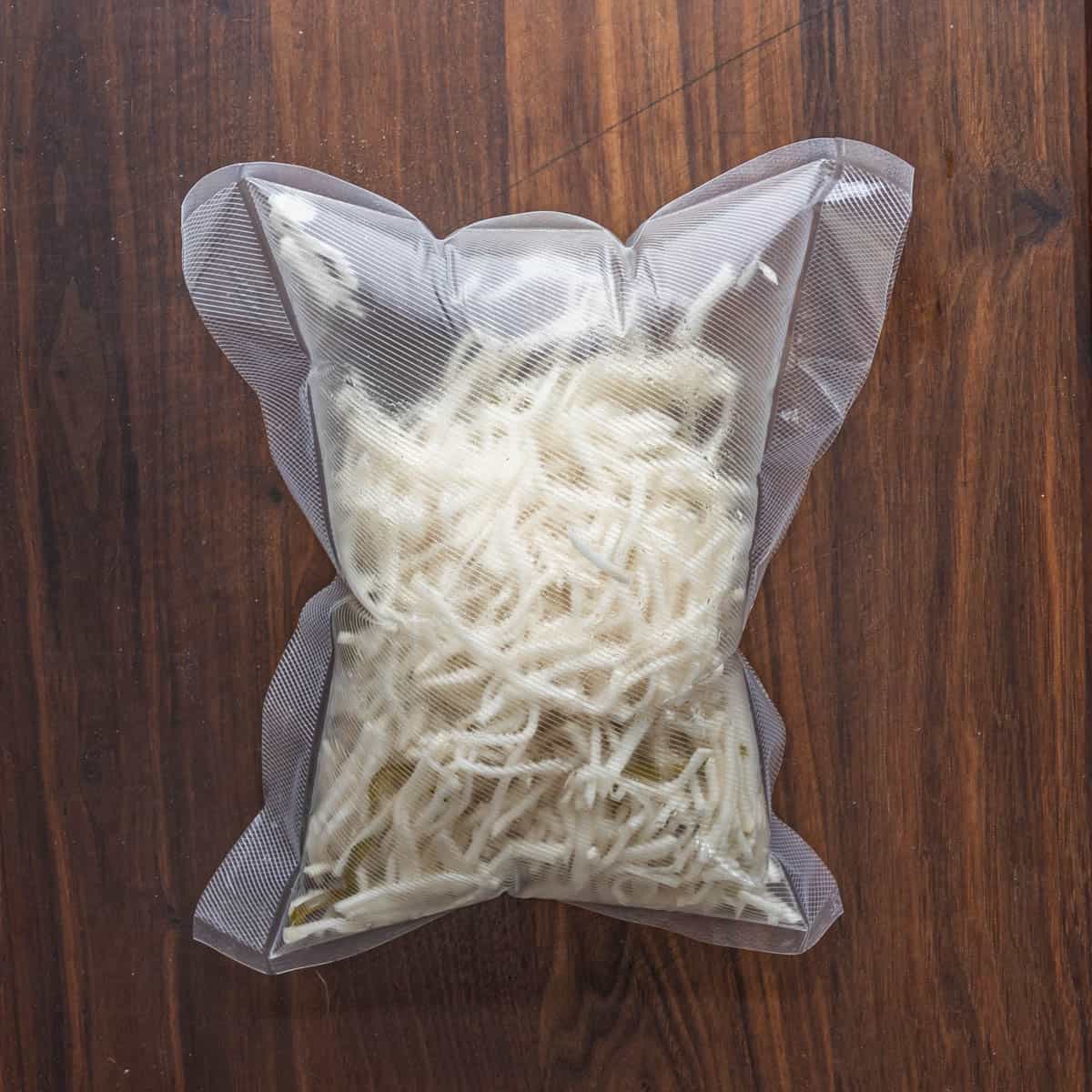Fresh sauerkraut is a world of difference from the mostly overcooked, mushy versions sold in jars at the store. It has a mild flavor and the cabbage is still crisp. This simple fermented root vegetables recipe is one you can use with many vegetables. Feel free to be creative with what you have!

Cabbage is only one thing that you can make a la sauerkraut though. Root vegetables make a great substitute for green cabbage. They can be a colorful alternative if you're in the mood for a delicious lacto fermentation project.
A while back I needed a component for a lamb sausage dish I was doing for a private dinner. I wanted it to be colorful, so I developed this recipe.
This is a simple ferment that's easy to make at home. To honor traditional kraut, it has tiny wild caraway seeds to boost the flavor as the vegetables ferment in the brine.


Best Root Vegetables for Fermenting
Here's a list of some of the veggies I used, or would use. Try to make a colorful blend, but stay away from blue roots as they bleed
- Golden, scarlet, hakurei or purple top turnips
- All species of winter radish, i.e. watermelon radish, black radish, lavender radish, daikon, etc
- Rutabaga
- Celery root
- All species of carrots except purple
- White or golden beets, in small amounts
- Parsnips

Using a mandoline
Root vegetables are more firm than cabbage. One of the most important things is to use a mandoline slicer here for the perfect texture. Just make sure to respect the mandoline as it's easy to cut your fingers.

More Fermentation Recipes
Root Vegetable Sauerkraut, with Wild Caraway
Equipment
- 1 Fermenting crock
- 1 Mandoline
Ingredients
- ~5 lb The biggest mix of root vegetables you can find peeled and trimmed to yield 3.5 lbs
- 1 oz kosher salt
- 2 teaspoons lightly toasted wild or conventional caraway seeds
Instructions
- Cut each type of vegetable into different shapes for slicing on the mandoline to show off the individuality, you don't have to do this, but it looks pretty to have a variety of shapes. If you don't want to do shave each veg into a different shape, you can just cut paper thin slices, rounds, or you could even just shred or grate it, which will make it's own brine much faster.
- Combine the shaved vegetables, salt and caraway and pack into a plastic container or a fermenting vessel, then wait for 30 minutes so the vegetables can give off their liquid and start to make a brine.
- When you can press down on the vegetables and have them just lightly covered with brine, put a weight on top of the vegetables, or cover with 2 thick garbage bags filled with very cold water to keep the mixturre underneath the brine.
- Put the mixture in a cool dark place away from sunlight, and allow it to ferment for 9 days, checking on it and stirring every other day to help it along, and making sure the brine is always covering the vegetables. If you like the flavor after less or more time, go for it, sometimes I even go as long as 14 days.
- When serving, you'll want to cook the root veg kraut to soften them up a bit and allow you to introduce other flavors, like meat stock, butter, a piece of ham, etc, as much to flavor them and soften the acetic acid from the fermentation, as to make the vegetables soft and tender for better eating.


David L Kramer
What / where is the recipe for the kraut? Do you use 3.5 lbs. of cabbage with 1 ounce of Kosher salt to make the sauerkraut too? Do you add any water or any other ingredients? We lived in Edina, MN for several years and now live in FL. Thank you.
Alan Bergo
Hi David. Scroll down to see the recipe, it's listed at the bottom of this post. You don't have to add water since the vegetables water will be drawn out by the salt. You can also vacuum seal the vegetables with salt and ferment them that way--some people find that easier. Use 2% salt of the total weight of mass to be fermented for most vegetable ferments like kraut. Basic cabbage kraut is the same.